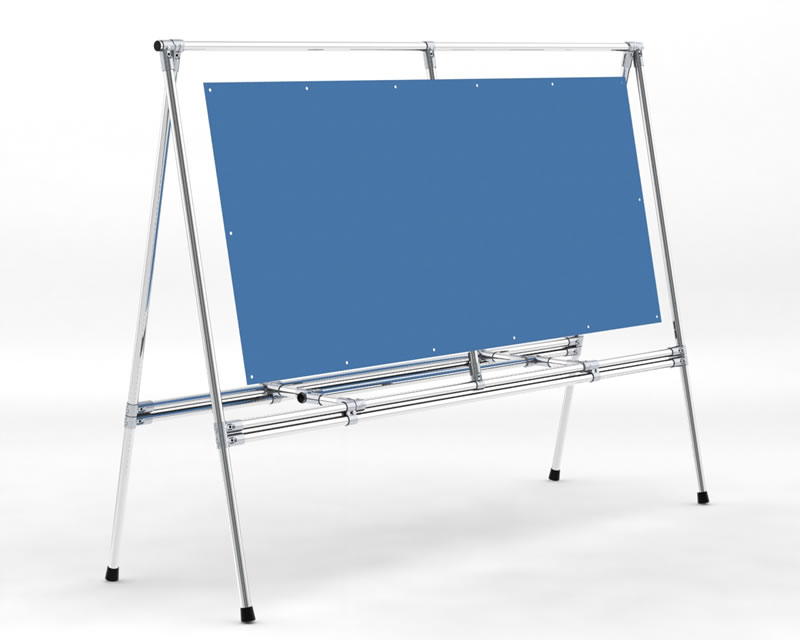The fact that display boards come in all manner of shapes and sizes can be a blessing or a curse – you of course want the right tool for the job, but at the same time…where to start? Well, while there are of course one-size-fits-all boards you can use for pretty much anything, there’s much to be said for finding the ideal board for any given task and getting the very most out of your investment.
The good news however is that making the right choice really means little more than evaluating exactly what you need, what you’d ideally like and what’s not necessary at all. Once you have your checklist in place you can go about making it happen – the following top ten tips should certainly help set the ball rolling:
1 – Is Bigger Better?
First of all, don’t go falling into the trap of thinking bigger is always better – it isn’t the case at all. The very best display boards are those that are neither crammed with too much content of have so much blank space going to waste they look rather bland. Think about where you’ll be displaying the information and what you plan to use the board for – it’s always better to leave a little room for manoeuvre but without overdoing it.
2 – Portability and Storage
Some display boards are easy to fold down, effortless to store away and generally a pleasure to transport. By contrast, others are a nightmare to do any of the above with. So, if you’re planning to move around in any way with your boards, be sure to look into portability prior to buying.
3 – Colours
While it’s tempting to go for a bright and bold colour that’s eye-catching and proud, it might not necessarily frame the actual content of the display board appropriately. So again, it’s a case of thinking about the information you intend to display, the nature of the communication and ultimately the colours that will set it off in the best way. If in doubt, think simple tones.
4 – Manpower
While some posters and stands can be snapped into place by one person with one hand in a matter of seconds, others need two or three people to get things in place. So before buying, think about how, where and when the boards will be used and make your choice based on manpower needed.
5 – Floor Space
It’s all well and good investing in a fantastic set of display boards and stands, but if you don’t have the floor space to accommodate them, it’s quite the waste of money. Always be aware of the fact that while some items take up almost no floor space at all, others are far more demanding.
6 – Indoor or Outdoor?
There’s a very big, very important difference between indoor and outdoor displays in the way they’re constructed. To use an indoor display outdoors is never a good idea for obvious reasons, so be careful when it comes to choosing in accordance with where the board will be used.
7 – General Strength
Even in many indoor environments a display board can still be put to the test with rather aggressive treatment. So before going ahead with a final choice, think carefully about how rough and rugged the boards and stands realistically need to be.
8 – Accessories and Add-ons
Some boards represent elements of much larger ranges which can be hugely convenient when it comes to adding on bits and pieces further down the line. So if you suspect you may need to add to your supplies, try to find a range with good inter-product compatibility.
9 – Adhesion Method
For the sake of practicality, appearance and general convenience across the board, consider carefully the merit of pins, Velcro, magnets and all other standard forms of adhesion for display boards. Some are inherently easy to use than others and some will provide a much longer life span, so think carefully about what might work best for you.
10 – Costs
And finally, while it may seem like there’s really little sense in investing in a higher-priced board when there are cheaper options on offer, it’s worth considering long-term value for money. Assuming the board is to be used for the long-term time and time again, it’s hardly cost-effective to buy a product that’s likely to need replacing or repairing on a regular basis. Instead, consider a higher quality product from the word go for the best possible value for money.




